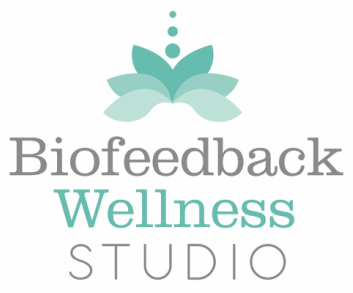Your First Session:
You'll have a chance to talk about your current situation and what you hope to gain from biofeedback. A baseline analysis with biofeedback assessment (Psychophysiological Stress Profile) will help determine if you are a good candidate for biofeedback. Don't worry. There are no needles or pain involved.
Placement of electrodes on your fingers, shoulders and/or forehead will measure heart rate, heart rate variability, skin temperature, sweat gland activity and muscle tension. A Velcro belt around your waist will measure your respiratory rate and breathing pattern. You'll be able to see your body's reactions to stress on a computer screen. You'll learn a lot about your body in just this first visit! We'll discuss your results , along with some biofeedback training recommendations. Plan on approximately 90 minutes for your first session. Subsequent sessions will last 45-60 minutes.
You'll have a chance to talk about your current situation and what you hope to gain from biofeedback. A baseline analysis with biofeedback assessment (Psychophysiological Stress Profile) will help determine if you are a good candidate for biofeedback. Don't worry. There are no needles or pain involved.
Placement of electrodes on your fingers, shoulders and/or forehead will measure heart rate, heart rate variability, skin temperature, sweat gland activity and muscle tension. A Velcro belt around your waist will measure your respiratory rate and breathing pattern. You'll be able to see your body's reactions to stress on a computer screen. You'll learn a lot about your body in just this first visit! We'll discuss your results , along with some biofeedback training recommendations. Plan on approximately 90 minutes for your first session. Subsequent sessions will last 45-60 minutes.
General Biofeedback Measurements
|
Muscle Tension: Electromyography (EMG) measures electrical activity of skeletal muscles. Excess muscle tension and "bracing" can cause fatigue,
pain, muscle spasms and weakness. Biofeedback increases your awareness of muscle tension. Learning to decrease tension can lessen symptoms associated with chronic pain, headaches, muscle strain, TMJ and assist in overall relaxation. |
Electrodermal Activity (Galvanic Skin Response) (GSR) (Skin Conductance): Electrical activity on the skin surface corresponds with sweat gland activity. It is highly sensitive to thoughts and emotions and is an indirect indication of your stress response. Individuals with anxiety or panic attacks can benefit from learning to lessen electrodermal activity. GSR levels can be affected when perpetual arousal of the sympathetic nervous system begins to put a strain on adrenal gland function.
|
|
Skin Temperature: Thermal biofeedback is used to indirectly evaluate blood flow through the vessels under the skin. When stressed, some individuals experience cold hands due to overactive sympathetic nervous system arousal. A relaxed state increases blood flow and is beneficial to the cardiovascular and immune systems. You can learn to voluntarily warm your hands. This can be helpful for those with high blood pressure, pain, migraines, Raynaud's Disease, complications of diabetes and for overall relaxation.
|
Heart Rate, Respiratory (Breathing) Rate and Patterns:
You can influence your body's ability to regulate involuntary functions of the automatic nervous system, simply by improving your breathing patterns. Learning to enhance cardio-respiratory synchrony (heart rate coherence) and heart rate variability (respiratory sinus arrhythmia) has many benefits. There is research that indicates increasing your heart rate variability may lead to improvements in your stress response, heart and lung function, blood pressure, sleep patterns and cognitive performance. |
